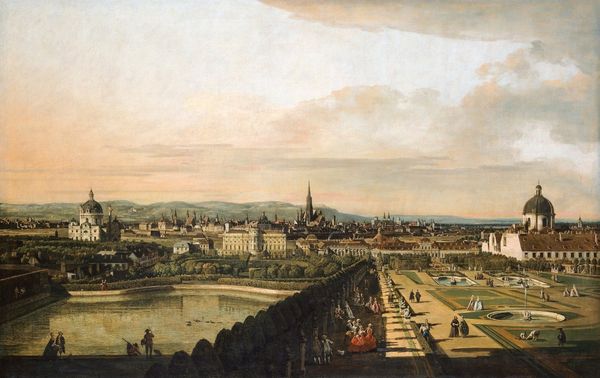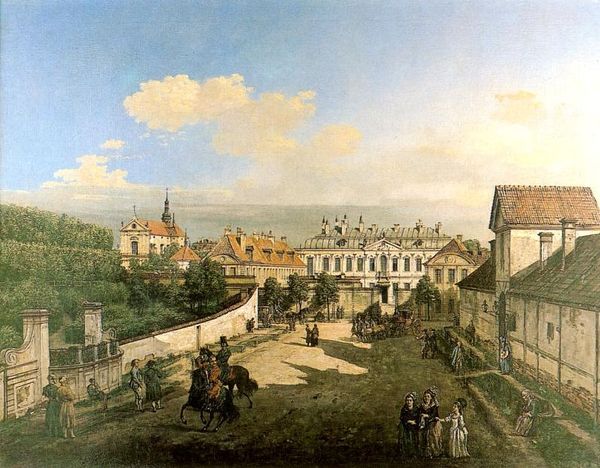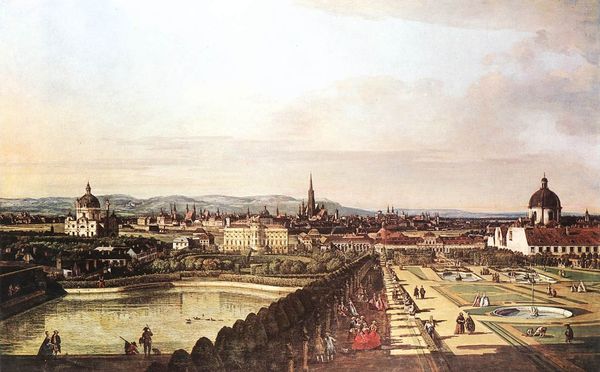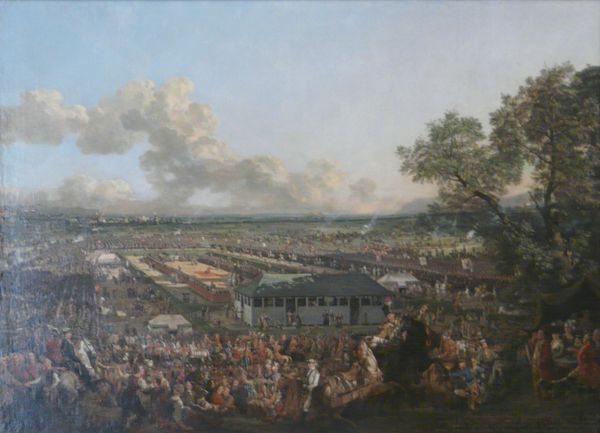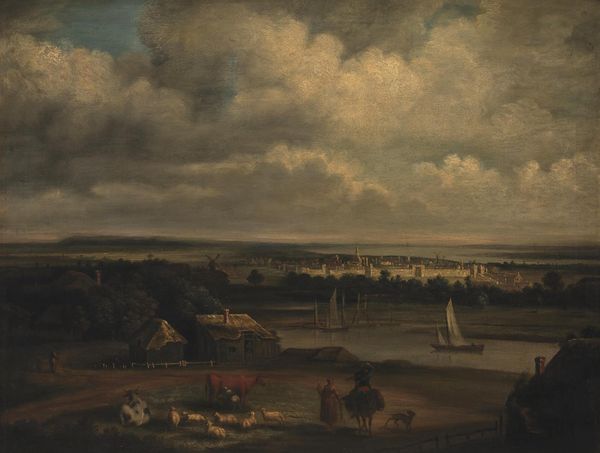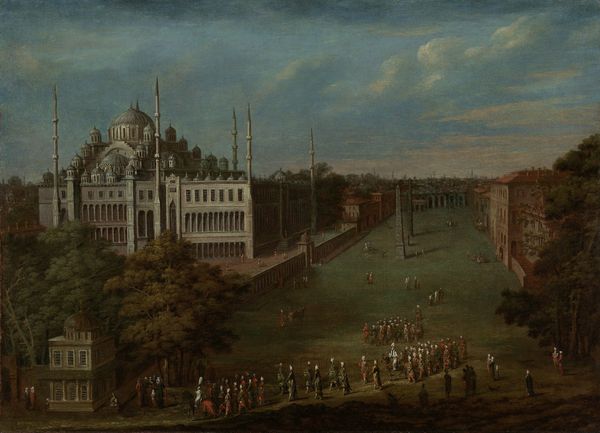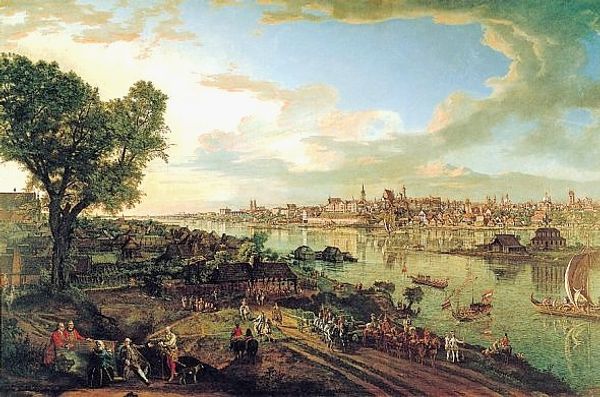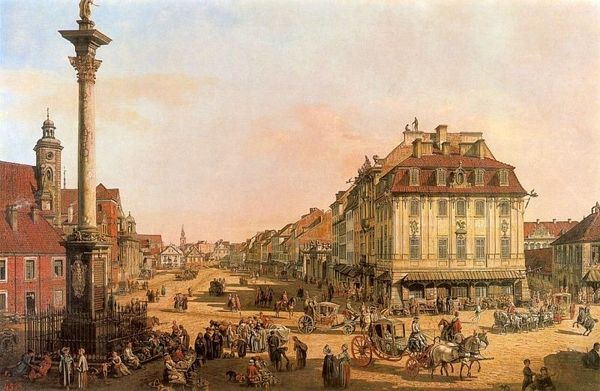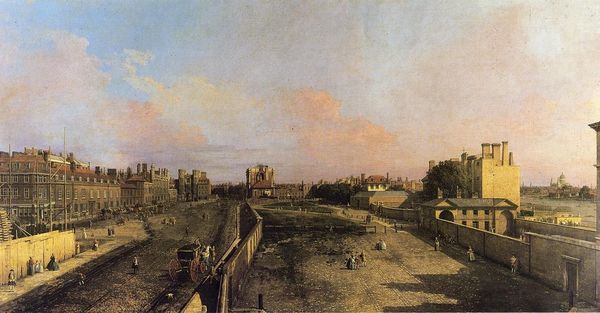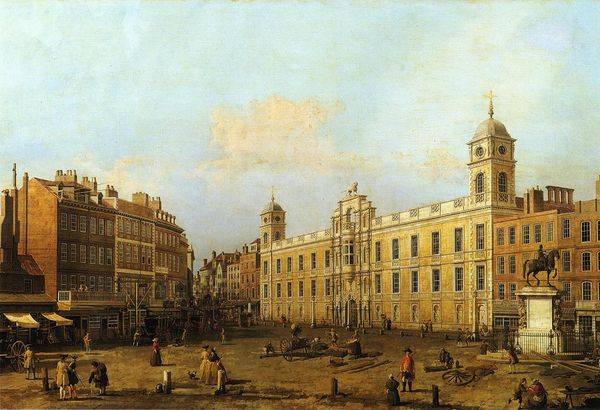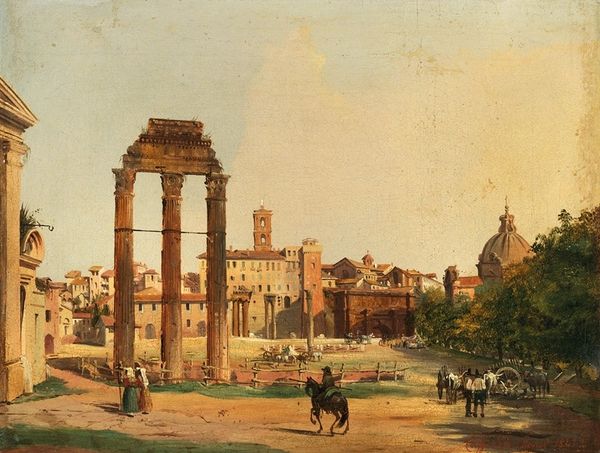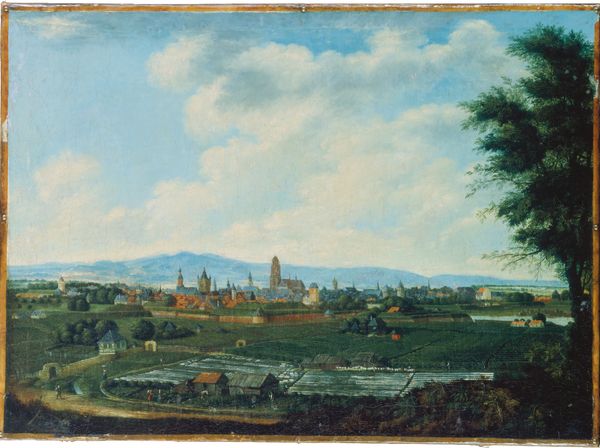
Copyright: Public domain
Editor: Here we have Bellotto's "View of Warsaw from the terrace of the Royal Castle," created in 1773 using oil paint. It has this tranquil, almost staged feel, like everyone is posing for a group portrait. What's your read on it? Curator: It's vital to see this painting not just as a pretty cityscape, but as a political statement. Bellotto, working under King Stanisław August Poniatowski, consciously presents an image of a prosperous, well-ordered Warsaw on the eve of the partitions of Poland. The level of detail emphasizes the vibrant city life and royal patronage. Can you sense the tension between what's depicted and what was historically happening? Editor: I guess I was focused on the surface. I hadn't thought about it as propaganda. Curator: Consider who's absent, too. Are there diverse groups of people depicted? Who gets to occupy this 'perfect' urban landscape? This focus promotes a certain narrative that must be critically examined, including how women and marginalized groups were depicted or omitted altogether. It urges viewers to look at who benefits from this ‘ideal’ city. Editor: So the painting, in its striving for perfection, ironically reveals underlying social tensions? Curator: Precisely! And the realism that seems purely descriptive also works ideologically, obscuring those very tensions by presenting a harmonious façade. Now, do you see how "realism" can serve a specific power structure? Editor: Absolutely. Seeing the city not just as buildings and streets, but as a stage for power dynamics changes everything. Curator: And by viewing this work through that critical lens, we resist the singular story and can reveal a multitude of truths. This deepens our experience beyond simple admiration. Editor: I will never see landscape paintings in the same way!
Comments
No comments
Be the first to comment and join the conversation on the ultimate creative platform.
